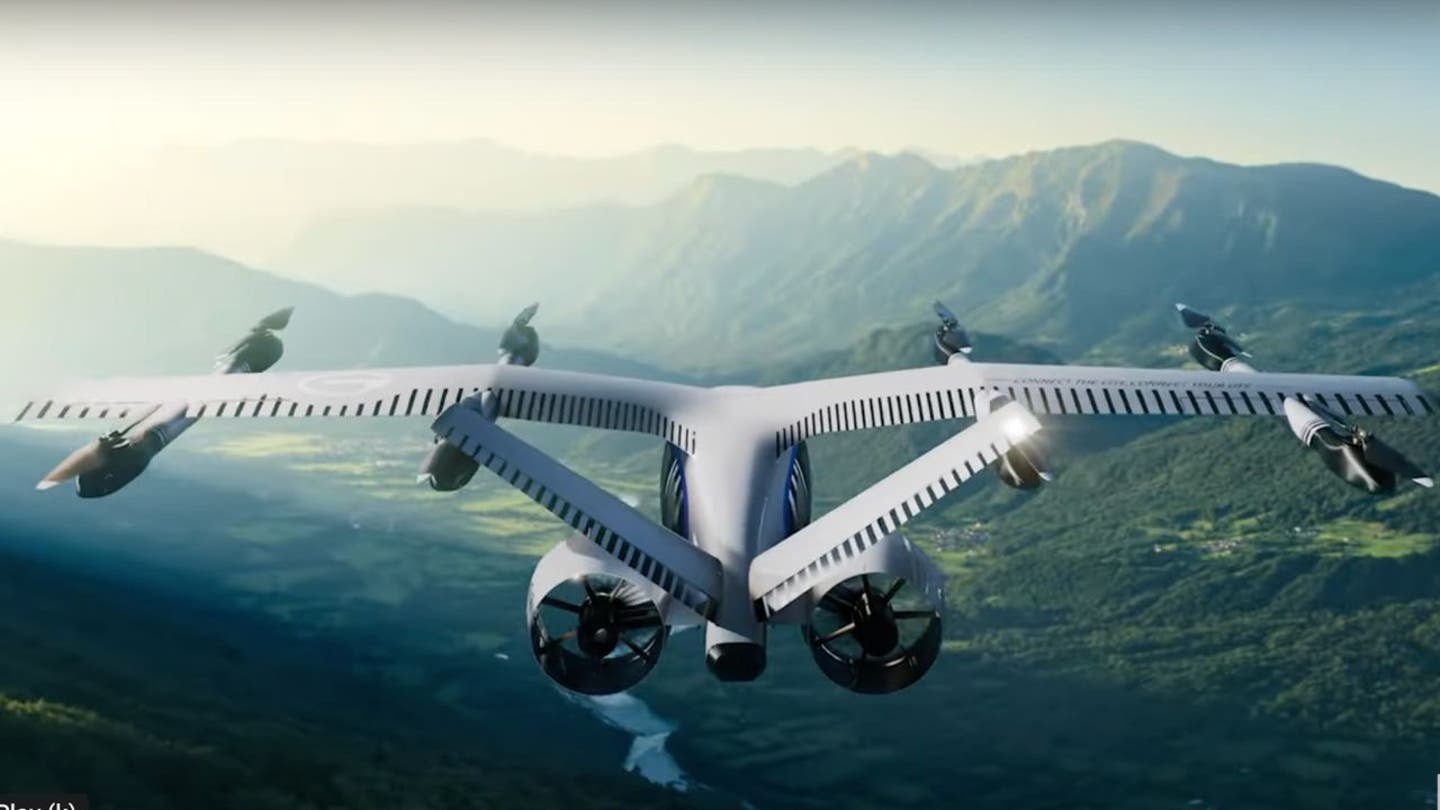Chinese automaker aims to revolutionize transportation with flying cars as a new commuting option
GAC Group, a distinguished vehicle manufacturer from China, is causing a stir in the transportation industry with the introduction of its new eVTOL brand, Govy.
This advancement demonstrates GAC’s dedication to sustainable air travel, as the corporation leverages its extensive automotive knowledge and cutting-edge technology to develop new solutions for urban mobility.
Through Govy, GAC is not merely venturing into the flying car market; it is paving the way for a new era in how we consider commuting and connectivity in our cities.
Flagship aircraft of Govy named AirJet. (Govy)
Introducing the AirJet
The flagship aircraft of Govy, named AirJet, is a groundbreaking composite-wing flying car designed to function as an air taxi for distances of up to 124 miles. This innovative vehicle merges the efficiency of fixed-wing aircraft with the adaptability of multi-rotor systems, enabling vertical takeoff and landing capabilities.
The AirJet is built with over 90% carbon fiber composite materials, making it incredibly lightweight — just one-third the weight of a traditional car of comparable size. This lightweight construction not only boosts performance but also permits longer electric flights.
WHAT IS ARTIFICIAL INTELLIGENCE (AI)?

Flagship aircraft of Govy named AirJet. (Govy)
Performance and features of the AirJet
In terms of performance, the AirJet is powered by GAC’s exclusive electric propulsion system, enabling it to achieve impressive speeds of up to 155 miles per hour. The current model boasts a range exceeding 124 miles, with ambitious plans to extend this range to 249 miles through the advancement of future solid-state battery technology. Moreover, the AirJet can be recharged in just 30 minutes, ensuring swift turnaround times for operations.
The AirJet is designed with both opulence and safety in mind. It features a commodious cabin with a “1+1+X” seating arrangement that offers versatility for passengers. The aircraft is equipped with autonomous flight capabilities, allowing for seamless operation without human intervention. Safety is a primary concern in the design of the AirJet. It encompasses advanced safety mechanisms like backup power and control systems, real-time monitoring, and obstacle detection to ensure safe flights.

Flagship aircraft of Govy named AirJet. (Govy)
The robo-air taxi system
GAC’s vision extends beyond individual aircraft to encompass a comprehensive Robo-AirTaxi system that integrates ground and aerial transport for end-to-end smart mobility solutions. This system will utilize the Govy AirCar for short urban trips under 12.4 miles and the AirJet for mid-range travel up to 124 miles. A key aspect of this vision is the creation of a “40-minute Greater Bay Area life circle” in China, which aims to facilitate efficient intercity travel and significantly reduce transit times and costs.

Flagship aircraft of Govy named AirJet. (Govy)
Future plans and commercialization
Looking ahead, GAC has outlined an ambitious roadmap for Govy. By 2025, the corporation aims to achieve certification for its flying vehicles, establish production facilities, and start accepting pre-orders from clients. Additionally, GAC plans to initiate demonstration operations in two to three Greater Bay Area cities of China by 2027.
Kurt’s main points
With the introduction of Govy and its flagship AirJet, GAC Group is positioning itself as a leader in urban aerial transportation. By merging cutting-edge technology with a comprehensive ecosystem approach, GAC aims to revolutionize urban mobility into something more intelligent, secure, and sustainable. As we progress towards a future where aerial vehicles become a crucial component of our transportation networks, GAC’s projects could have a significant impact on how we traverse our cities and interact with one another.

